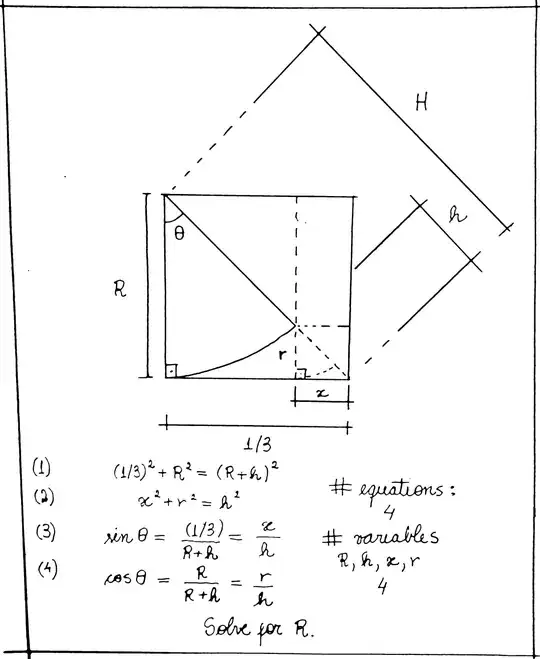While designing a mechanical part, I stumbled upon a geometry problem that I've been unable to solve. The problem seems simple but the answer has been eluding me.
In the figure, only the base dimension is known (numerically equal to 1/3). There is a circle segment with radius R, marked by the arc, that is formed according to this known dimension. This base dimension is equal to the distance between the tangent point and the intersection of the line when the radius is prolonged.
I need to determine the radius R.
I've assigned variables to the problem as best as possible, and found out four equations to the problem. With four variables and four equations, I thought that the problem was over but got lost in the calculations.
I've also draw this problem in CAD. The program indicated me that it was well defined, and resulted in R = 0.6667. I'm however unable to get to this result analytically.
There is a similar question:
But note that in the case here the arc length is unknown.
Thanks in advance for any assistance.
